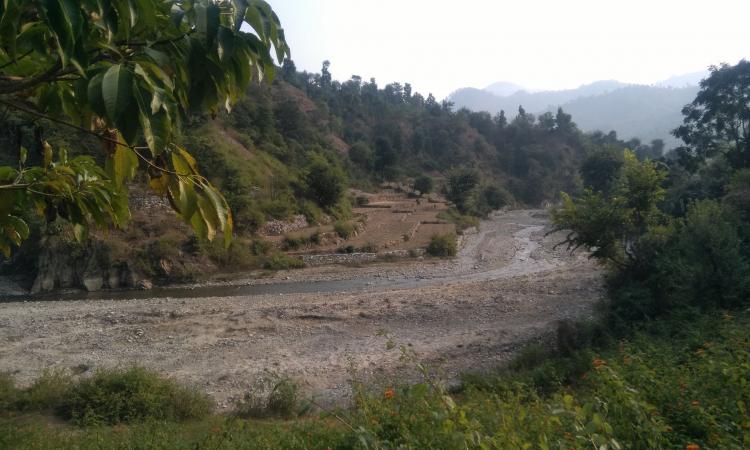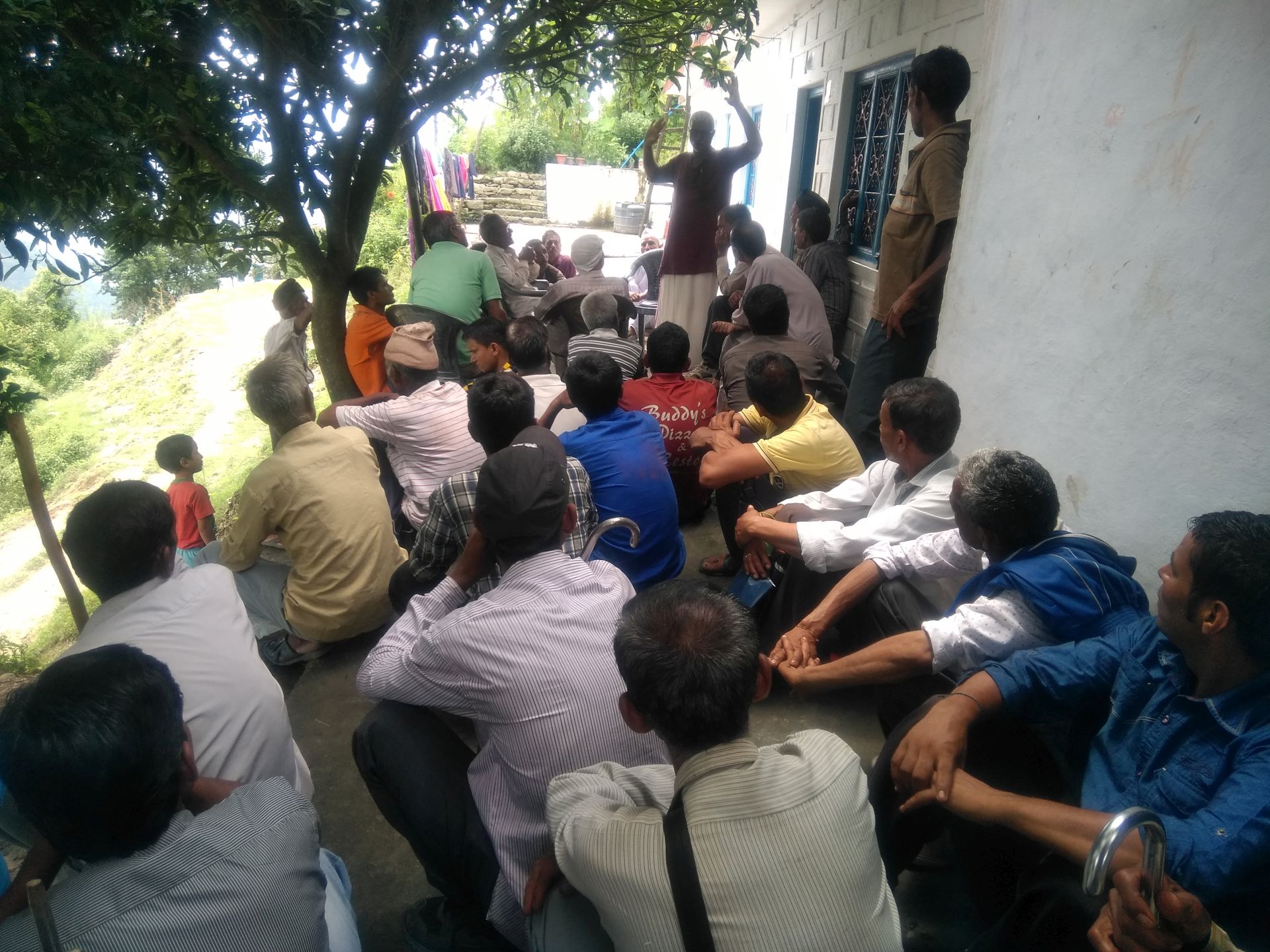
River Mahakali snakes its way through the hills and valleys of Nepal and Uttaranchal, collecting its water from the numerous streams it receives on the way. Also known as Sharda in India, the river forms the international boundary between India and Nepal. The river has, of late, become a cause of disagreement between the state and the people due to the widespread community opposition to a proposed dam on it at Pancheshwar. Planned to be the second highest dam in the world and the highest in India at 315 metres, the dam has another regulating dam of 95 m at Rupaligad, 27 kms downstream of the main dam.
What the dam can do
A transboundary venture, the Pancheshwar multipurpose project costing Rs 33,108 crore will require 13,700 hectares of land of which 9100 hectares is in India. Of this, 41 percent is agricultural land and 59 percent is common land under the category of forests and other revenue lands. The dam is expected to produce 5040 MW of energy and irrigate 2.59 lakh hectares in India and another 1.7 lakh hectares in Nepal, apart from controlling floods downstream. The dam will impact Pithoragarh, Champawat and Almora districts in Uttarakhand. A total of 134 villages (31,023 families) and two towns in India and 103 villages (over 18000 families) in Nepal will be affected adversely by the dam.
“Conceived without the knowledge of the public, especially those who are going to bear the brunt of it, the dam was proposed under the Mahakali Treaty signed in 1996 between the governments of Nepal and India. The Pancheshwar Development Authority was set up as an autonomous body, to finalise the detailed project report and expedite the implementation of the project in 2014,” says Surendra Arya, Mahakali Lok Sangathan, an organisation opposing the dam.
As per the government’s estimate, more than five lakh trees will be impacted by the submergence and deforestation due to the project. The agriculture in the region is dependent on the diverse mixed deciduous forests on which livestock also depends for sustenance. Forests serve many other needs of the communities apart from fuelwood and fodder--leaf litter, medicinal plants, oil, agricultural and housing material are all drawn from the forest.
The area has a number of protected areas and tiger habitats across both India and Nepal that are already being affected by habitat fragmentation due to development pressures. As a result, it is unable to ensure the preservation of endangered species and valued fauna downstream of the dam. The situation could have been mitigated by the establishment of habitat corridors, but that is not possible in the wake of the dam. The area is also home to quite a few historical worship places and famous temples like Pancheshwar and Rameshwar apart from numerous sacred groves.
Faulty impact assessment invites opposition
“The Mahakali Lok Sangathan has opposed the dam on the grounds that it will cause large-scale displacement of people who will not be adequately rehabilitated. Even today, the people displaced by the Tehri, Vishnugad Pipalkoti, Asi Ganga and Vishnuprayag projects are struggling to get land-based rehabilitation and agitating for basic facilities,” says Surendra Arya, president of the Mahakali Lok Sangathan. Apart from this, it will destroy the dense forests of Kumaon and partially or completely submerge the prime agriculture lands. The historical places of significance like the markets of Jhoolaghat-Jauljibi, the symbols of Indo-Nepal socio-cultural ties are facing submergence.
The environment impact assessment, the environment management plan as well as the social impact assessment were all done in a rush and are totally absurd, according to the people. Besides, the local language versions of the report were not shared with communities prior to public hearings. Public hearings were done within closed doors and the Expert Appraisal Committee has blindly accepted these without any verification.

Around 45 eminent environmentalists and river activists of the country wrote to the Ministry of Environment, Forest and Climate Change (MoEFCC) secretary, head of the Expert Appraisal Committee and its members, raising their concerns regarding the public hearing process held in August 2017 at Champawat, Pithoragarh and Almora, which were not as per the guidelines of the 2006 notification. Public hearing notices were published in newspapers but the 134 affected villages have limited access to newspapers being remote and unmotorable especially during monsoons (due to landslides). People did not have complete knowledge of the various impact assessment studies.
The dam is yet to get environmental clearance. The timeline of the process is as follows:
- August 2017: Public hearings were held at Pithoragarh, Champawat and Almora. The report of the hearings was sent to the Uttarakhand Pollution Control Board through the district magistrate
- September, 2017: Uttarakhand Pollution Control Board has sent the report to the Ministry of Environment, Forest and Climate Change (MoEF&CC)
- October 2017: Expert Appraisal Committee set up by the MoEF&CC in its meeting went through the reports and made some observations
- November 2017: A sub-group set up by the Expert Appraisal Committee made a one-day hush hush visit to the site without informing or meeting most of the Project Affected Families (PAFs) or social groups protesting the dam
- December 2017: Expert Appraisal Committee met on Dec 5, 2017 and decided to postpone the dam clearance decision till its next meeting
- January 2018: Uttarakhand has constituted a cabinet sub committee to prepare rehabilitation plan for the villages affected by the project
Pancheshwar dam is yet to get its forest clearance. As of now, the state government has pointed out some 50 shortcomings in the reports by the project proponent (dam builder). After the removal of these discrepancies, the state government will forward it to the MoEF&CC for clearance. The Forest Advisory Committee at the MoEF&CC will deliberate on this and give its agreement. The clearance will be given after the state government reviews the situation.
The opposition to the dam also came from several political parties like the Uttarakhand Parivartan Party, Uttarakhand Kranti Dal, national and state organisations and campaigns like National Alliance of People’s Movements, Delhi Solidarity Group, Pahar and Van Panchayat Sangharsh Morcha. Anti-dam leaders like Medha Patkar and 92-year-old environmentalist Sunderlal Bahuguna too came forward to oppose the impact of the gigantic dam on the environment and people. All of them have issued statements against the manner in which the government is pushing the project. Some local political representatives of Congress also have been demanding that the compensation and rehabilitation package be improved before proceeding with the project.
A skewed resettlement plan
The proposed dam has socially fractured the local community right down the middle. Even if the compensation for Project Affected Families (PAF), which as per the social impact assessment report should be four times the market rates of land that will be lost is increased to six times of the market or circle rate, it is still not a good recompense because of the low circle rates, especially in the remote villages. Thousands of families will be pushed to poverty as they will lose their diverse land. The distribution of compensation is highly skewed and will benefit only 23 of the 134 villages (see infographics below).
If one goes by the social impact assessment report, 34 percent of the total land to be acquired for the project falls in one village--Majirkanda of Pithoragarh district. This village will get 65 percent of the total compensation, as per an analysis by the Mahakali Lok Sangathan. The dam-ousted families are now faced with the inability to acquire lands elsewhere. There are seven villages in Champawat that will get a compensation rate of Rs 50,000 per naali (circle rate is Rs 12,500/naali; 1 hectare = 50 naali). Even if this is multiplied six times of the applicable circle rate of the area, it amounts to a maximum compensation of about Rs 75,000 lakhs/naali. It is not at all possible for a family to buy fertile and productive land in a well-connected village in the area at this rate. For instance, if people of Kaanadi were to search for land around Wadda, the current rate there is around Rs 7-8 lakhs/naali, i.e., 10 times higher than the compensation rates they would get.
“The villages that are to benefit are mostly in Pithoragarh district--Majirkanda, Dutibagar, Kimkhola, Dungatoli, Jogyoura, Bagdihat, Bheliya etc. What people need is land for land. Since that has not been provided for in the rehabilitation policy and the compensation rates are insufficient, the displacement by the dam will lead to severe impoverishment, as these farmers will not be able to buy similar fertile land, and thus there is no guarantee of a livelihood for them in the future,” says Prakash Bhandari, an anti-dam activist associated with Himdhara Paryavaran Samuh and Mahakali Lok Sangathan, Pithoragarh.
The project will submerge 2422 hectares of forest land. In order to get a forest clearance for this, the Uttarakhand government requires the consent of the affected gram sabhas under the provisions of the Forest Rights Act (FRA) 2006. The district magistrates of the three project affected districts have given orders to local officials to get no clearance certificates under the FRA from the affected villages without the implementation of the Act itself. This is against section 4(1) and 4(5) of FRA. As per section 4(1) “the central government recognises and vests all forest rights mentioned in section (3) in the forest dwelling schedule tribe and other forest dwellers” and whereas as per section 4(5) of the Act “no members of schedule tribe and other forest dwellers shall be evicted or removed from forest land under his occupation till the recognition and verification procedure is complete”. Clearly, legal processes have not been followed here.
Even as the controversy deepens, the government is adamant that the work on the dam will go on.
/articles/dam-consequences